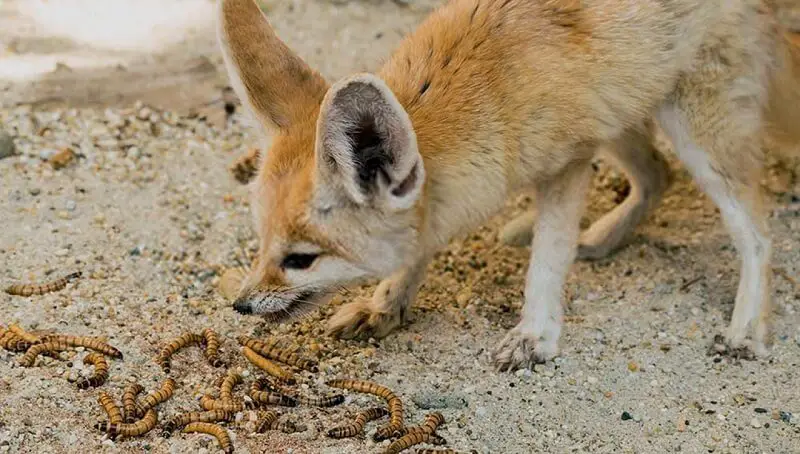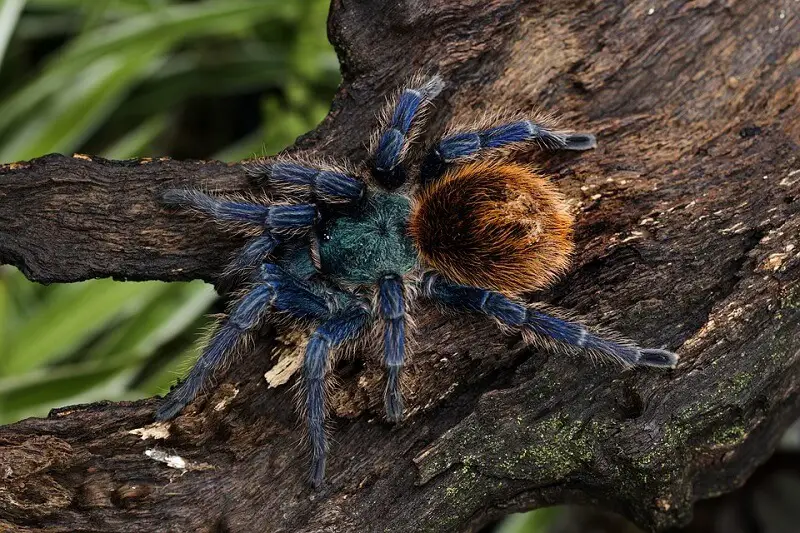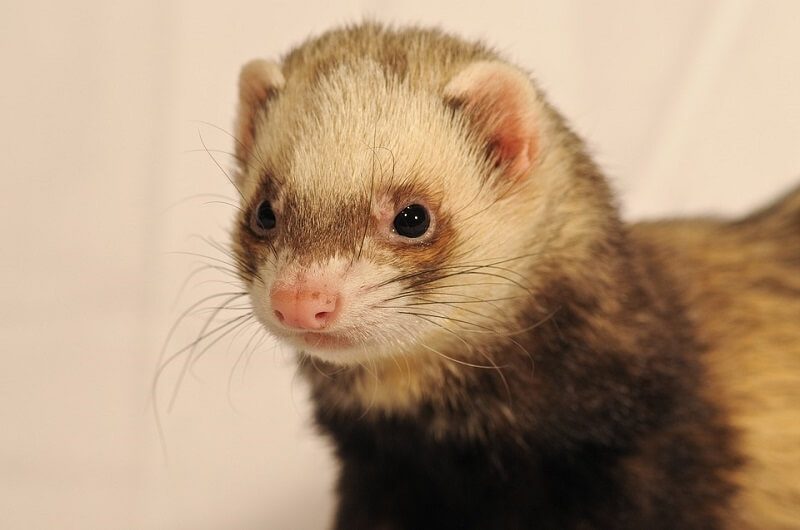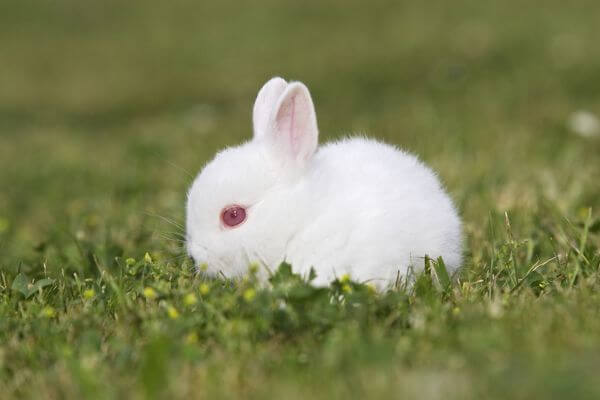On the outside is similar to a medium-sized dog, but the fox has several feline habits. On its flexible body is a neat head with a sharp and mobile muzzle, always alert, large and dark ears, with short, thin, but strong legs.
The fox is an omnivorous mammal of small to medium size, belonging to the Canidae family, along with the wolf, dog, jackal, and raccoon.
A fox can weigh an average of 4 to 8 kg but can reach up to 10 kg. The shades of its fur range from light red, yellow and white, to dark brown, spun or not. The tips of the ears and feet show black spots.
The fox has a long, bushy tail, measuring between 30 and 40 cm. It has a fine constitution, bushy whiskers and obliquely laid eyes. The body length of the fox is between 110 and 130 cm.
The fox has sharp, short ears pointing upwards. It has 4 short limbs. The front limbs have 5 fingers and the back limbs only 4 fingers. The speed travel of the fox can reach about 46 km/h.
The fox has exceptional hearing, a very good sense of smell, and good eyesight. It digs her own burrow, and it always has several exits. In some cases, the fox can occupy the burrows dug by veal and even share them with them or with wild cats.
What Is an Omnivore?
Omnivorous animals are those who eat almost anything. That is, they can eat the flesh of other animals or parts of plants. Examples of omnivores are the bear, the turtle, the raccoon, the fox, or the human being.
Omnivorous animals are characterized by being able, through their digestive system, to absorb nutrients derived from other animal tissues or plant tissues. In short, they have a “mixed” gut, as if it were the mixture between the intestines of a carnivorous animal and an herbivorous one.
Omnivorous animals must consume both types of food to survive, meaning that following strictly carnivorous or herbivorous diets could have negative consequences on their growth and development.
Are Foxes Omnivores, Carnivores, or Herbivores?
Food: Predominantly carnivorous. The food of foxes is varied, but they prefer mice and other small rodents.
Foxes are solitary animals most of the year, except during the mating period. They have predominantly nocturnal activity, rarely hunting at twilight. Only when it is hungry or has to feed her young cubs, does the fox come out of the den during the day.
What do foxes actually eat?
The fox can adapt its food. Small mammals, cockroaches, bird corpses, and even rotten meat. One aspect of foxes’ food is their appetite for fruits or grains. They like to consume blackberries when it’s their season.
It detects prey even without seeing it, but it does not run after it, but jumps at it with its front paws, like cats. Most foxes often hunt more than they can eat at a single meal and bury what is superfluous, and return to the “supply” site at another time.
The food preferences of the fox vary depending on the seasons, the availability of food, and the species of fox.
What does a fox eat depending on the season?
The diet of a fox varies depending on the location and availability of certain foods – depending on seasonal changes. Let’s look at each season.
What does the fox eat during winter?
During the winter season, their diet will change and will depart mainly from the possibilities of catching and eating due to snow or ice, consisting mostly of small mammals, like mice and rabbits, and even rats.
What does the fox eat during spring?
In the spring, they will fill their belly with rodents, such as mice and earthworms. They even swim in shallow water to hunt fish and crabs.
What does the fox eat during summer?
During the summer season, foxes need to grow while food is abundant, and prepare for the coming autumn and winter months. Therefore, they will tend to eat large amounts of insects. These include cockroaches, locusts, crickets, general beetles, and even small and large caterpillars, as well as small targeted amphibians such as frogs and tritons.
What does the fox eat during autumn?
In autumn, foxes prefer fruits that are now ripe and an abundance of berries such as blackberries, raspberries, blueberries, apples, and other types of fruits such as Asian or Japanese khaki. They also like acorns and tuberous vegetables such as yams, potatoes, and sweet potatoes.
Feeding fox cubs
At birth, fox cubs are blind and unable to hear or walk on their own and depend on their mother’s milk. These cubs start eating solid foods when they are around four weeks old. Therefore, the mother must take good care of them and keep an eye on them.
When they start to grow up, it is the father of the cubs who hunts and brings food to the family, in the den. Starting from their second month of life, fox cubs are taken on hunting by adults to begin their first attempts on their own.
During the growing period of the offspring, the fox hunts from deer calves, and rabbit babies, to piglets, which the fox carries to the den.
What do foxes eat depending on their habitat?
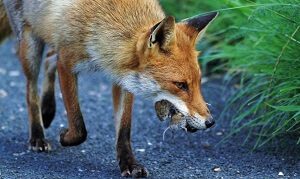 All the representatives of the fox species eat practically the same thing. The food differences are dictated by their habitat and are more cognitive than fundamental, representing a change in the proportion of certain foods. I will now talk about these features.
All the representatives of the fox species eat practically the same thing. The food differences are dictated by their habitat and are more cognitive than fundamental, representing a change in the proportion of certain foods. I will now talk about these features.
The American Corsac diet consists of rodents, rabbits, birds that nest on the ground, small reptiles, and fruits. In winter, it will not pass by shell animals, and in summer – besides insects (beetles and locusts mainly), which can make up half of its entire diet.
The Afghan fox is more herbivorous than other species. In addition to the desert and semi-desert flora and plants in the mountainous areas, where it mainly lives, the fox also feeds on insects, without excluding small locusts and rodents. It also likes watermelons and gourds – in those areas where they grow.
The African fox is the most herbivorous of all foxes and prefers berries and fruits. Occasionally, it can diversify its dinner with rodents, lizards, and invertebrates.
The Bengal fox eats small animals, insects, reptiles, cockroaches, bird eggs, and only occasionally fruits.
The Sand fox eats almost like the Afghan fox.
The Fenech fox, which lives in the deserts of the north and center of the African continent, is one of the most omnivorous foxes. It feeds on a significant variety of food like small animals, eggs, various insects, locusts, carcasses, fruits, and roots of plants.
The Arctic fox, which is also called the polar fox, is omnivorous because of its range. Its diet, like many species, is based on rodents – most often lemmings – and birds. In addition, it actively feeds on fish – both independently caught and washed ashore – and almost all types of rare northern vegetation – berries, herbs, even algae.
The gray fox also called the tree fox, which is often found in the North American forest, feeds on various forest rodents, birds, insects, and sometimes chickens. It also feeds on plant foods and will not miss the opportunity to destroy a squirrel’s or bird’s nest due to the fact that it can climb very well in trees.
The island fox, which only lives in one place, on the six Channel Islands off the coast of Southern California, feeds on what can be found there: insects, fruits, small animals, reptiles, birds, and their eggs
The Andean fox (Culpeo) eats mainly traditionally – rodents, birds, lizards, field rabbits, rabbits, and pikas.
The Darwinian fox prefers to feed on insects, small mammals, birds, amphibians, berries, and woodworms.
Once considered “chicken Eaters,” foxes have been cruelly hunted for years. Another reason why people have not looked at foxes with sympathy is that they spread – especially in rural areas – some very serious diseases, including rabies. Mammals with which foxes come in direct contact may be affected, but the disease can also be transmitted to humans either directly by bite or through yard poultry.
As you can see from the above, the fox remains a predator in any corner of the world, while also eating insects and fruits at the same time.
